Robinia pseudoacacia – Black Locust
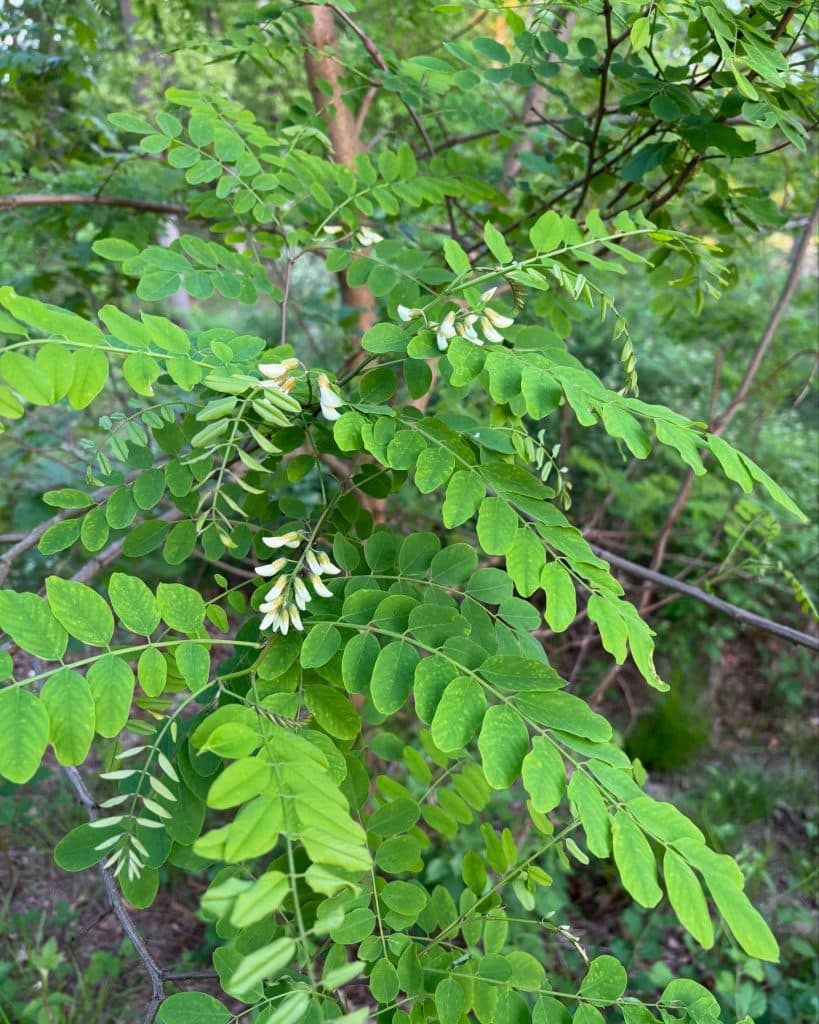
Black Locust (Robinia pseudoacacia) is an invasive tree in the legume family with edible components. Black locust trees were thought to have originated in southern Appalachian and Ozark mountains and have since spread. Black locust trees can be found in disturbed areas, roadsides, and fields. It spreads by root suckers to form clones. It […]
Ulmus pumila – Siberian Elm
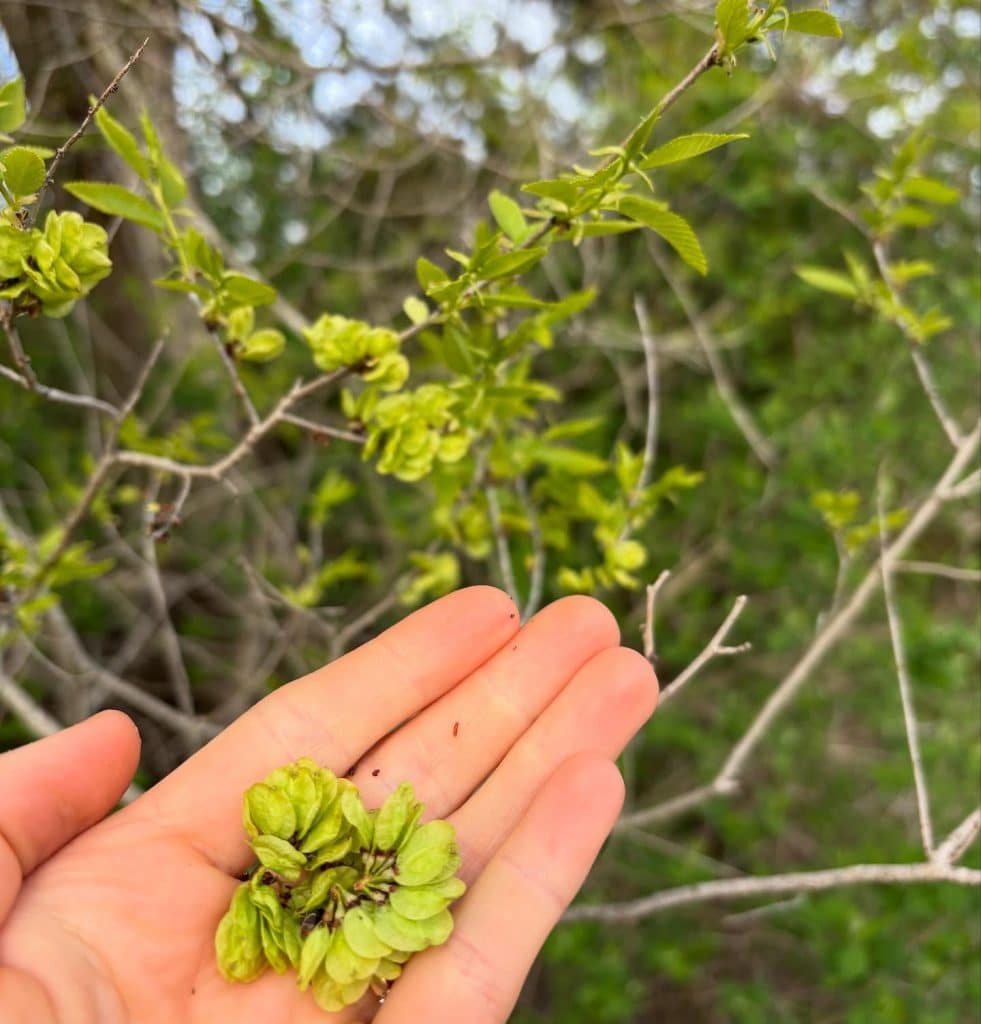
Siberian Elm (Ulmus pumila) is an invasive tree with edible samaras (seeds) that appear mid-spring. Siberian elm can be found in sunny areas such as fields and waste places. Siberian elm can be identified by its furrowed bark and alternate leaves that are elliptical in shape with toothed edges. Leaves have an uneven leaf base. […]
Nasturtium officinale – Watercress
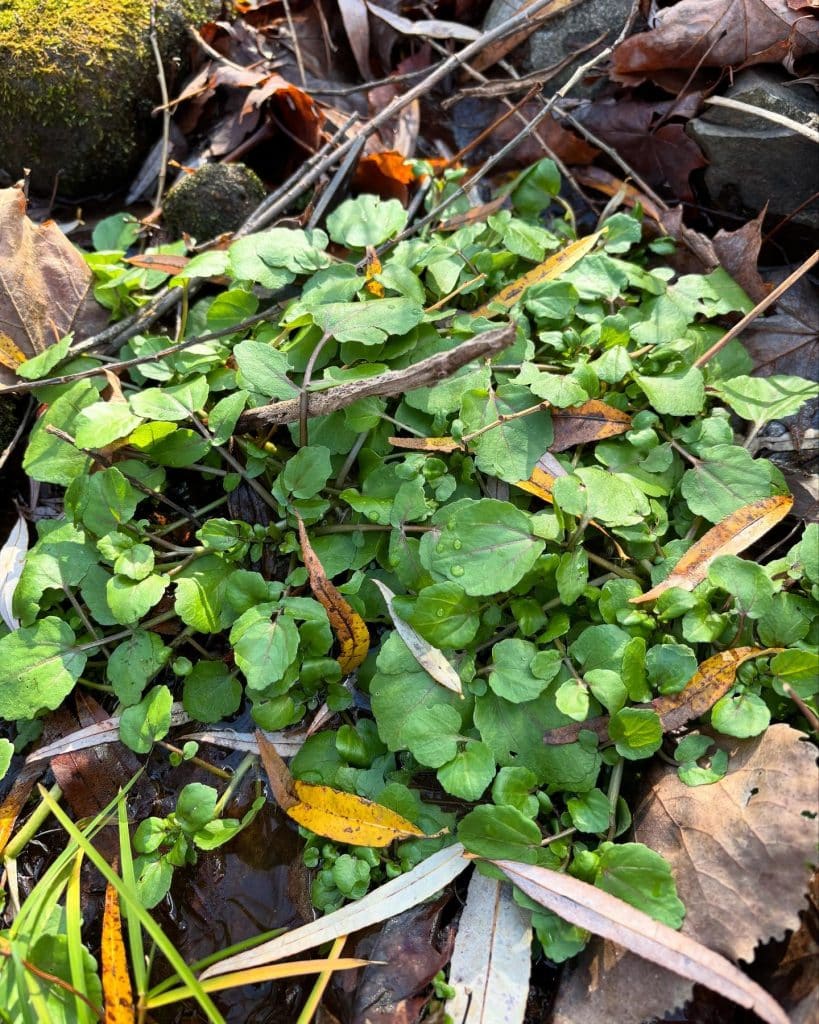
Watercress (Nasturtium officinale) is an edible perennial in the mustard family that can be found throughout the United States. It was brought over from Europe and has since become invasive. Watercress can be found in streams with water 1-6 inches deep. It is imperative to ensure the water is not polluted and the stream is […]
Rosa rugosa – Beach Rose
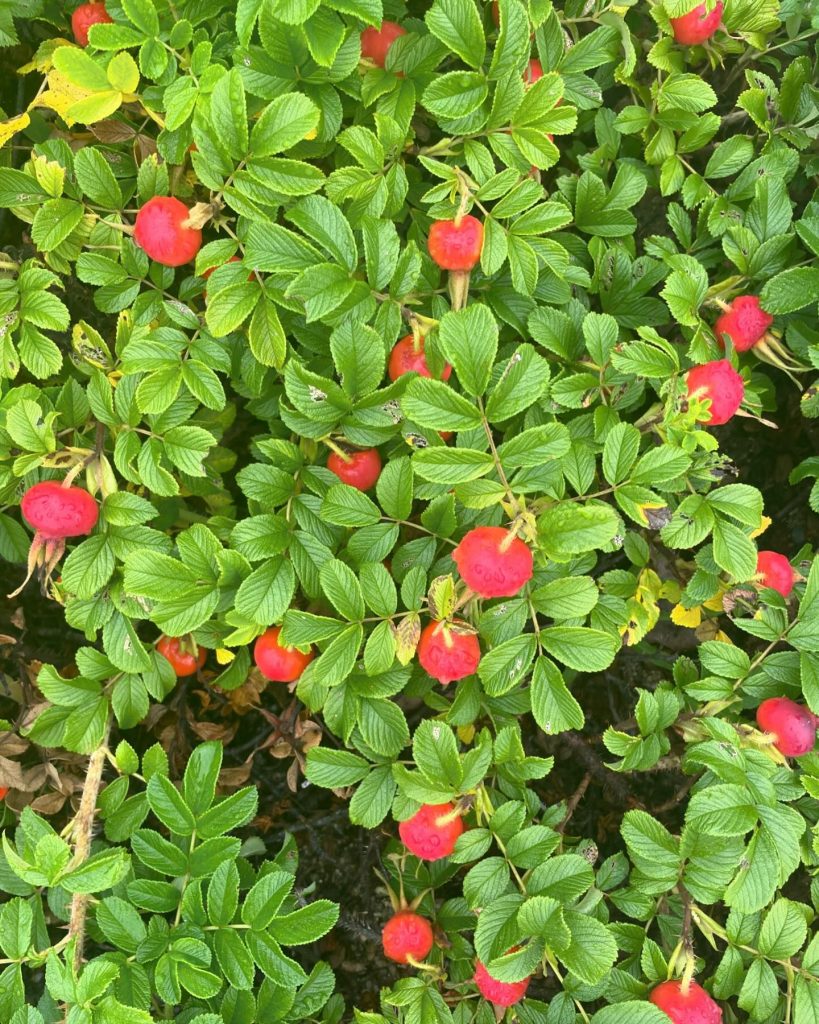
Beach rose (Rosa rugosa) is an invasive plant from Asia that was brought to the U.S. as an ornamental. It is salt tolerant so is often found near beaches. Beach roses have wrinkled, compound leaves with 5-9 leaflets. The canes have short, straight prickles. In late summer, flowers turn into rose hips that resemble tomatoes. […]
Rumex crispus – Curly Dock
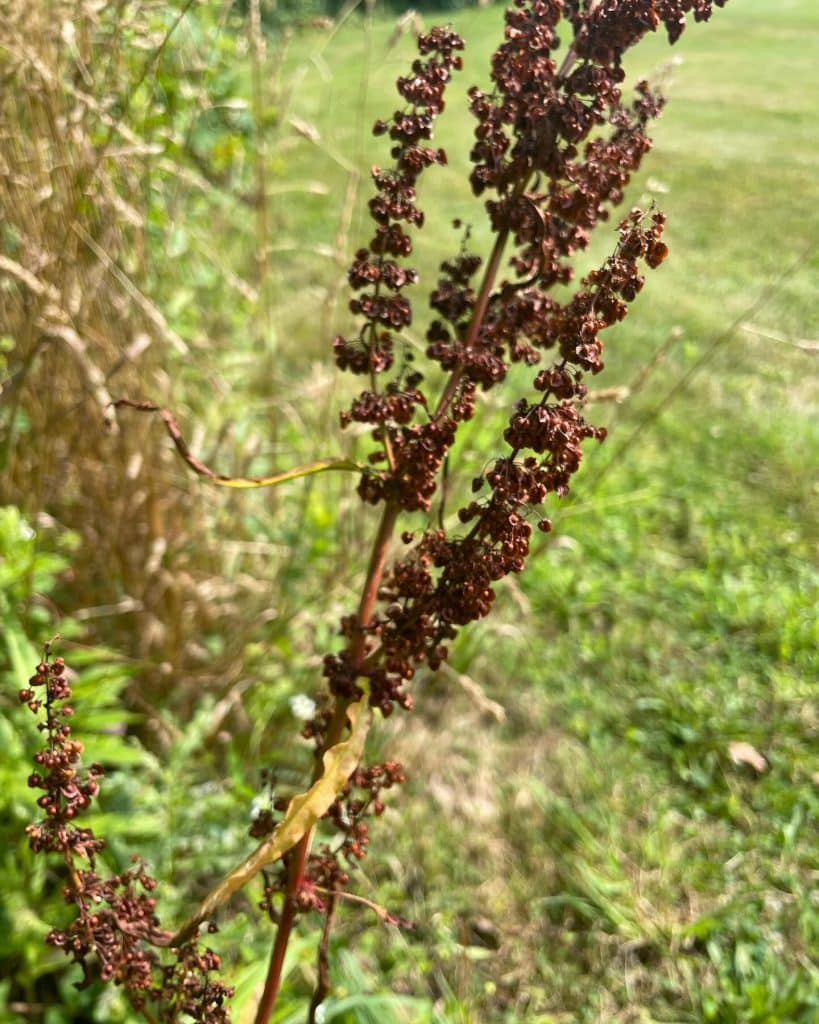
Curly Dock (Rumex crispus) is a distant relative of buckwheat that is native to Europe. Curly Dock can be found in fields, roadsides, and open areas. It can grow in full sun to part shade. Curly Dock has long, narrow, hairless leaves with wavy edges. It produces seeds in the summer which can stay […]
Lysimachia nummularia – Creeping Jenny
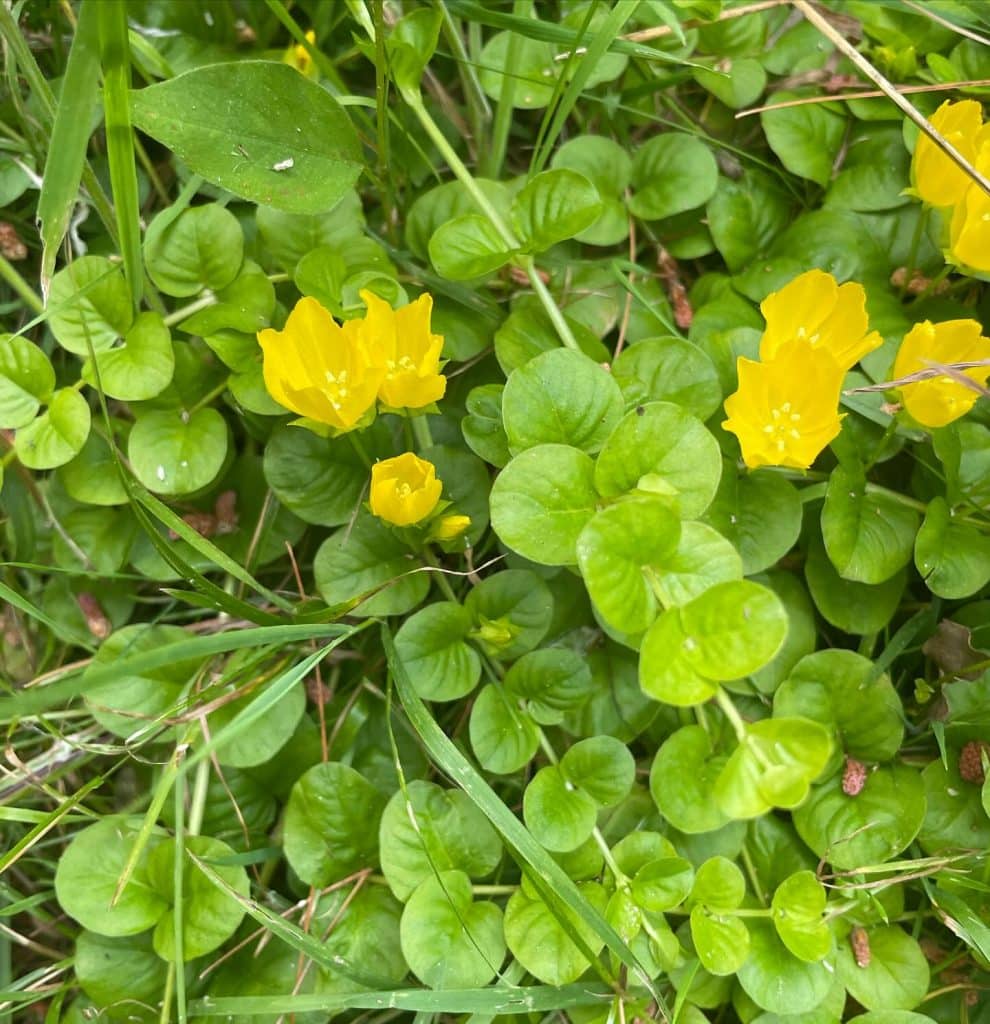
Creeping Jenny (Lysimachia nummularia) is an invasive plant with medicinal uses. It can be found in damp pastures and along sunny streams. Creeping Jenny, also known as moneywort, has opposite, rounded leaves that resemble coins. Flowers are bright yellow, and cup shaped. Flowers can be eaten raw. They have a taste reminiscent of cilantro. Creeping […]
Lonicera japonica – Japanese Honeysuckle
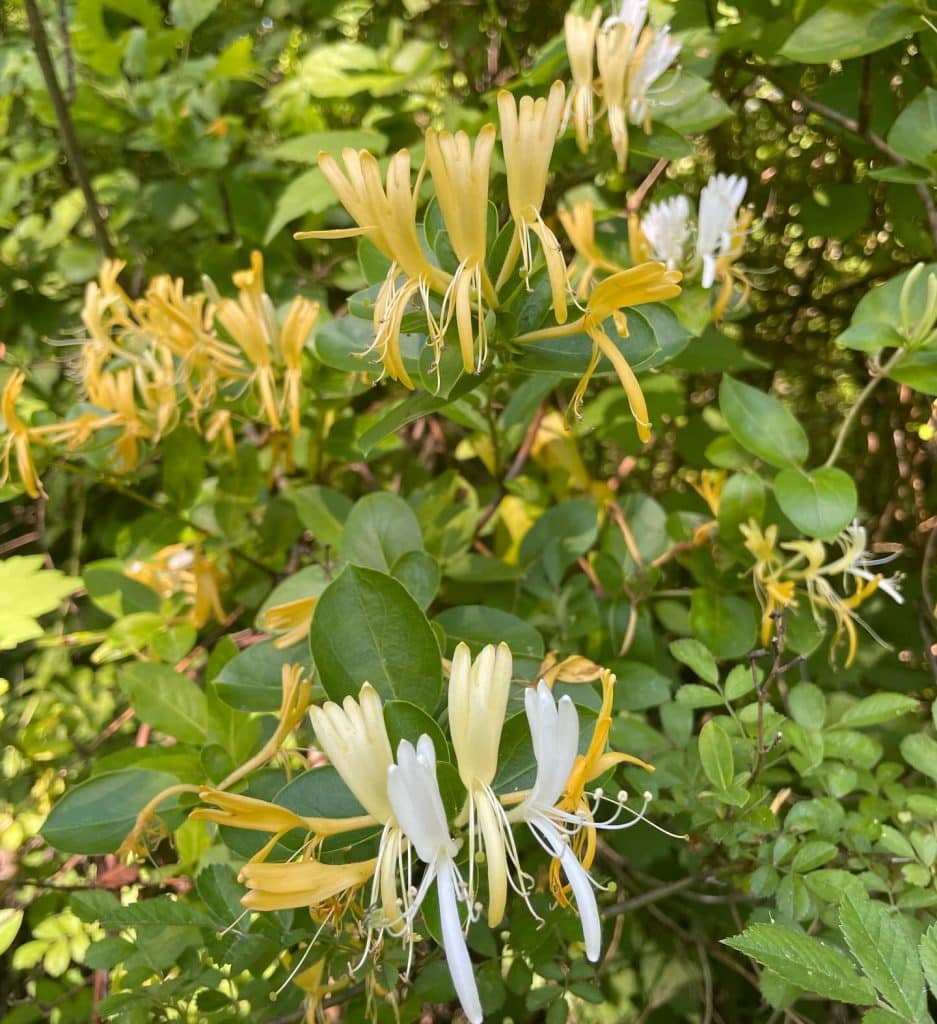
Japanese honeysuckle (Lonicera japonica) is an invasive vine. It has no predators in New England, which allows it to proliferate. The plant has edible and medicinal uses, as well as toxic parts. Japanese honeysuckle can be found in woodland clearings, meadows, and fences. Young vines are fuzzy. Older vines turn woody and brown. The […]
Reynoutria japonica – Japanese Knotweed
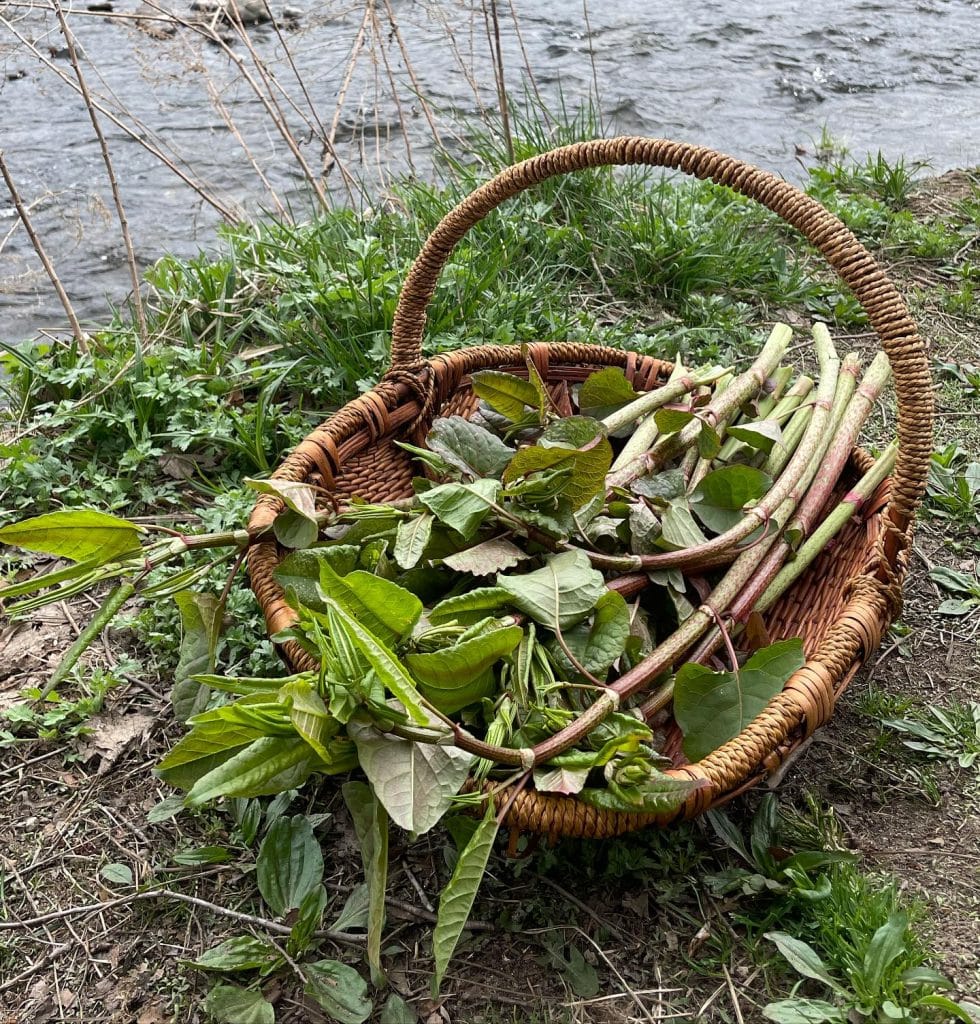
Japanese knotweed (Reynoutria japonica) is an invasive perennial that was brought to the U.S. from Asia as an ornamental. Japanese knotweed can be found in moist areas that receive sunlight. It often grows in large thickets in disturbed areas. It can grow up to 15 feet tall and its root system can reach 20 feet […]
Artemisia vulgaris L. – Mugwort
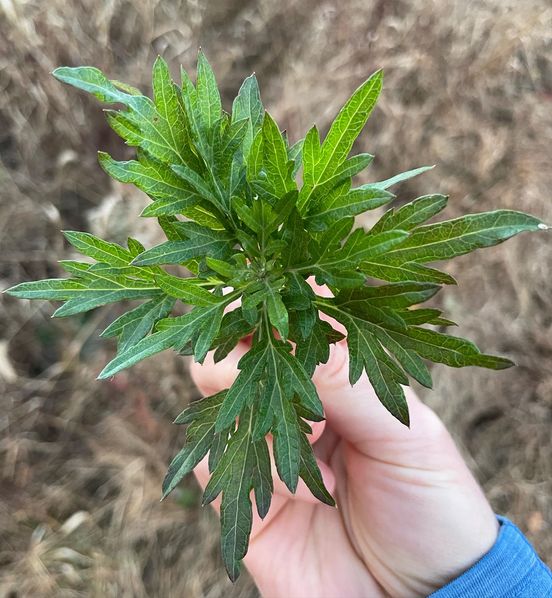
Mugwort (Artemisia vulgaris L.) is an invasive perennial plant that came from Europe. Mugwort can be found in fields, roadsides, and woodland edges that have partial to full sun. Its rhizomes exude a chemical that discourages growth of other plants. This allows mugwort to take over entire fields. Mugwort leaves have a green upper […]
Alliaria petiolata – Garlic Mustard
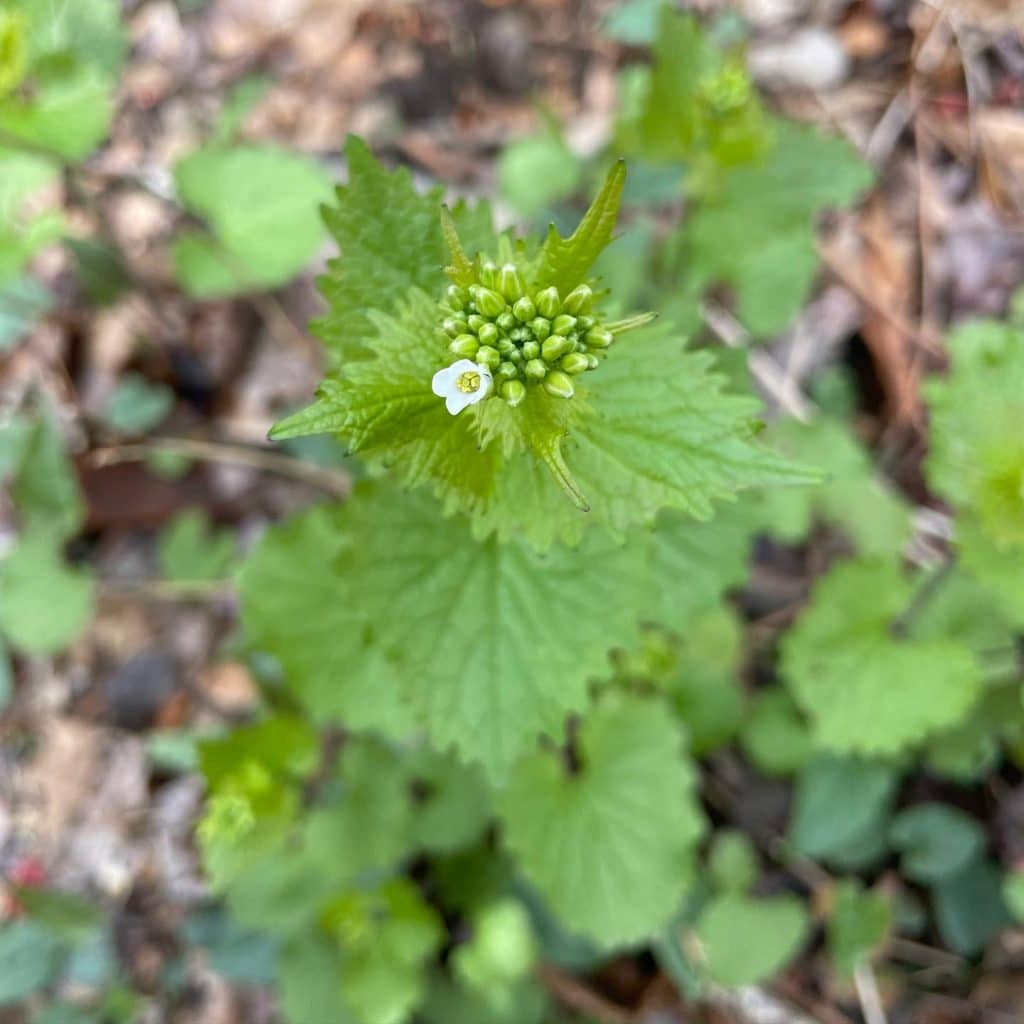
Garlic mustard (Alliaria petiolata) is an edible invasive plant in the mustard family. Garlic mustard can be found in human-disturbed areas, shaded field edges, and woodlands. It has the ability to take over woodlands and kill off 90% of all other herbaceous plants. Garlic mustard has no native predators and seeds can last up to […]
Cardamine impatiens – Narrowleaf Bittercress

Narrowleaf Bittercress (Cardamine impatiens) in an edible invasive plant in the mustard family. Narrowleaf bittercress can be found in woodlands, meadows, and near rivers. It prefers shade. The plant starts as a rosette with leaves with 13-21 leaflets. These leaflets are round with lobes. As the plant ages, it produces a flowering stalk with […]
Hemerocallis fulva – Common Daylily
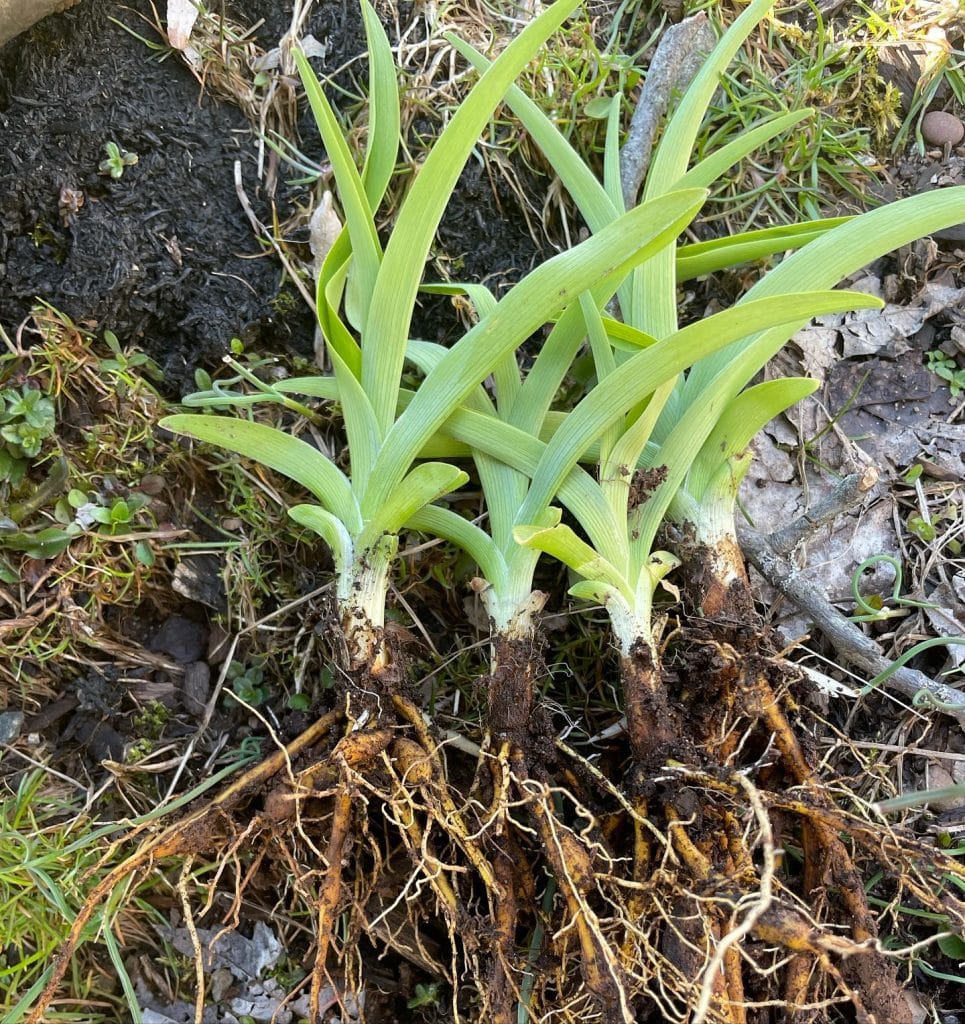
Common Daylily (Hemerocallis fulva) is a perennial plant that was brought here from Asia as a garden ornamental. It has since escaped cultivation and is now considered invasive in many states. Common daylilies can be found in fields and roadsides. They have the ability to form dense colonies, displacing native plants. The plant reproduces by […]
Rosa multiflora – Multiflora Rose
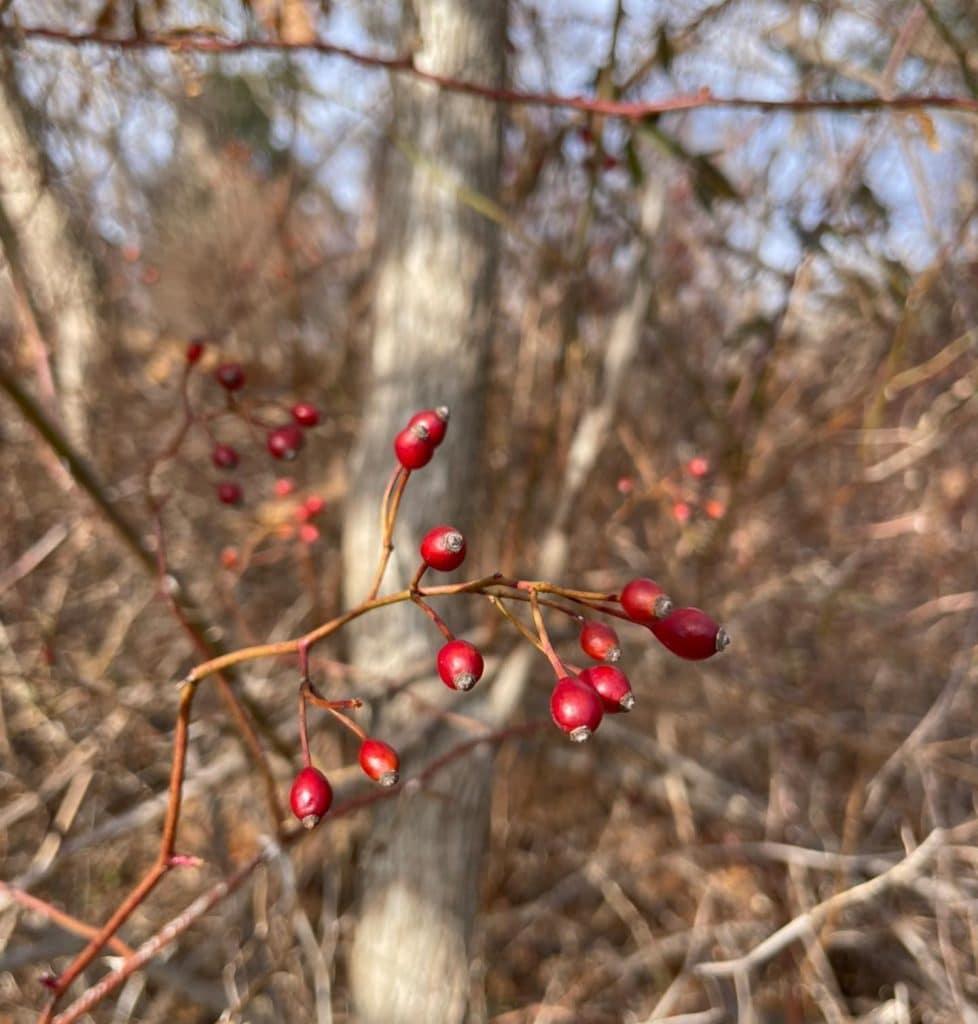
Multiflora rose (Rosa multiflora) is an extremely prolific invasive that can form dense thickets, crowding out native plants. Multiflora rose is found in open woodlands, forest edges, fields, and margins of marshes. All roses have edible leaves and fruits (hips). Roses have compound leaves with an odd number of leaflets. The thorns are long and […]
Barbarea vulgaris – Wintercress
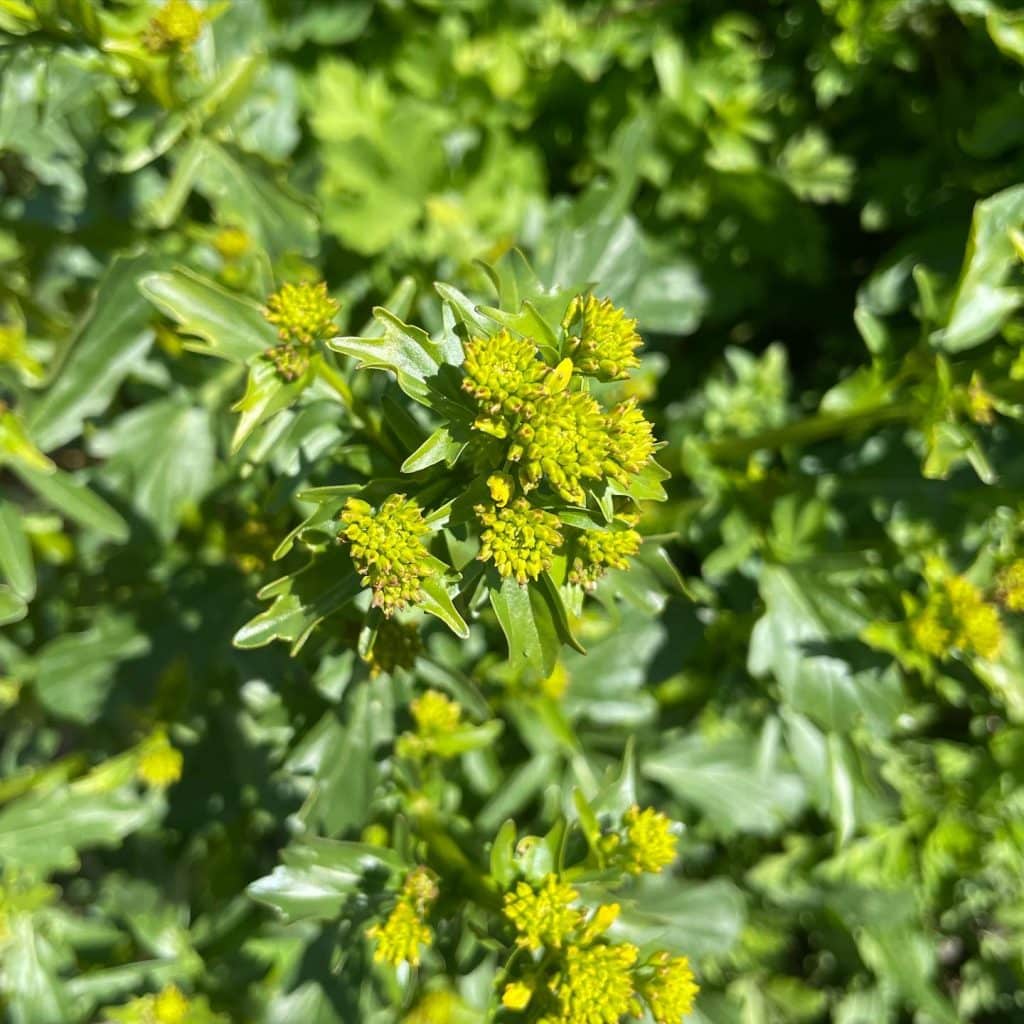
Wintercress (Barbarea vulgaris) is a non-native plant in the mustard family. Wintercress, also known as Yellow Rocket, can be found in fields, gardens, and disturbed soil in full sun. Wintercress produces a basal rosette of deeply lobed emerald green leaves. The leaves resemble arugula with larger, rounder lobes. The plant produces a hairless flower stem […]
Cardamine hirsuta – Hairy Bittercress
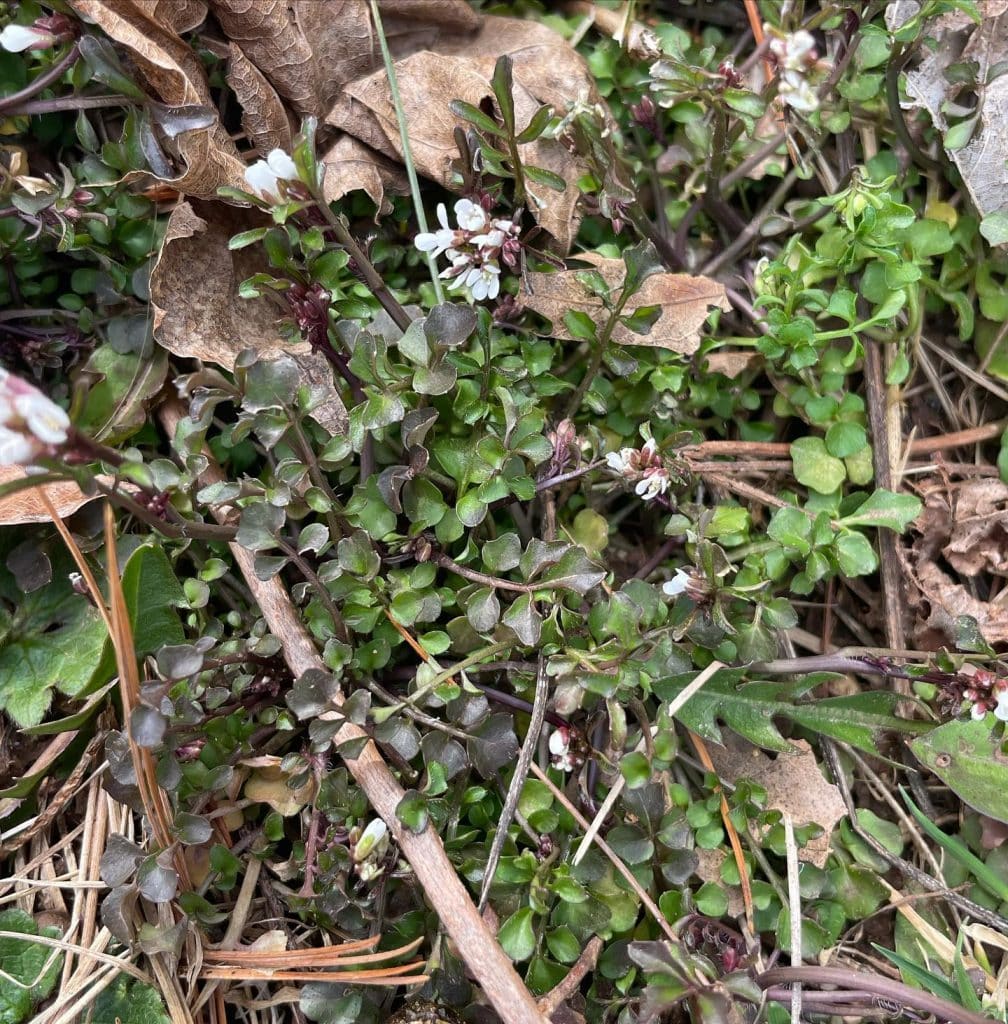
Hairy bittercress (Cardamine hirsuta) is an edible plant in the mustard family whose leaves can be used as microgreens. Hairy bittercress is named for the tiny hairs that appear on its leaves and stems. It can also be identified by its small white flowers with four petals that are produced in spring. Hairy bittercress thrives […]
Allium vineale – Field Garlic
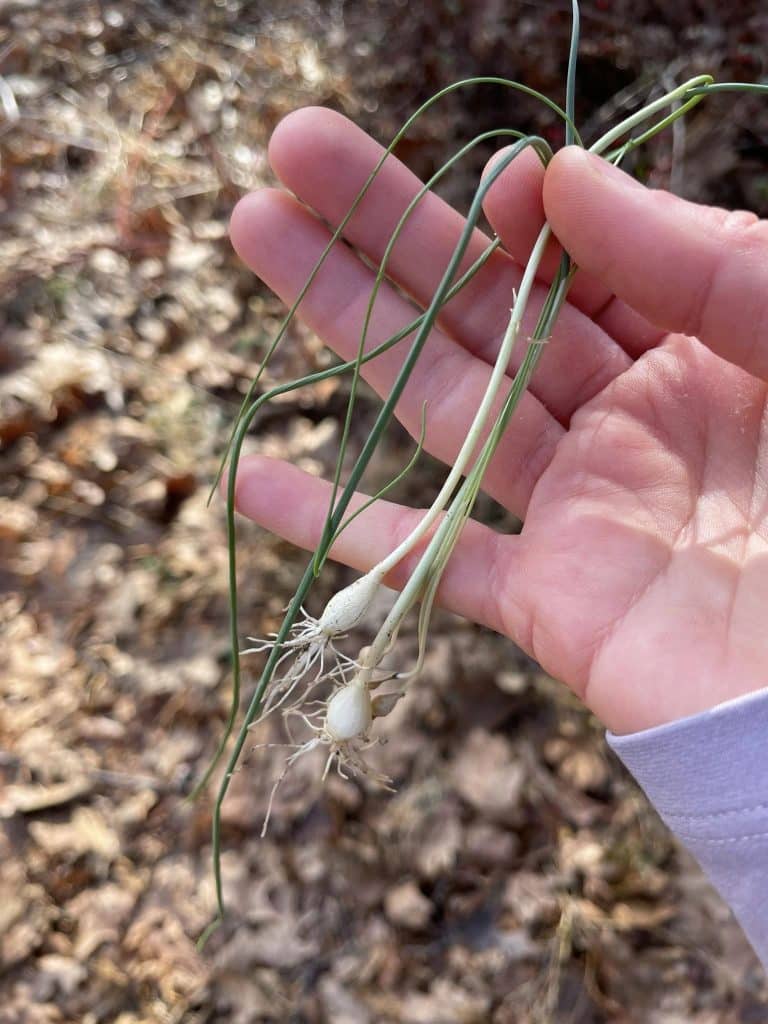
Field Garlic (Allium vineale) is a non-native relative of chives that can be foraged in the colder months. Any leaves with a garlicky scent are edible. Field garlic leaves are thin and hollow. All parts of the plant are edible, including the leaves, bulb, and flowers. The bulb can be left in the ground […]
Arctium lappa – Greater Burdock

Greater burdock (Arctium lappa) is an invasive plant with edible and medicinal uses. Burdock is often found in disturbed soil and along edges of fields and walking paths. Burdock is a biennial, producing a basal rosette its first year and sending up a flower stalk its second year. Burdock can be identified by its fuzzy leaves […]
Rubus phoenicolasius – Wineberries
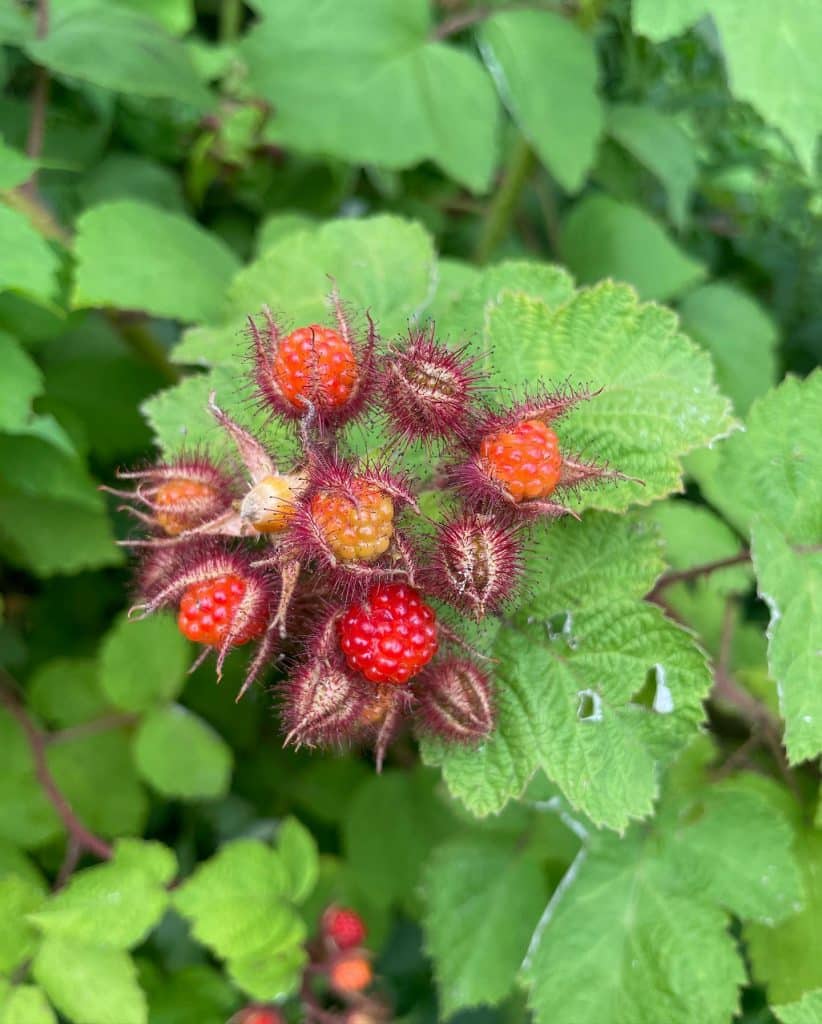
Wineberries (Rubus phoenicolasius) are an invasive type of raspberry from Japan. They were brought here for their potential in breeding hybrid raspberries. Wineberries can be identified by their purplish-red stems with hairy bristles and bright orangish-red berries. Wineberry leaves are rounder than raspberry leaves. The immature fruits are covered by a reddish hairy calyx which […]
Berberis thunbergii – Japanese Barberry
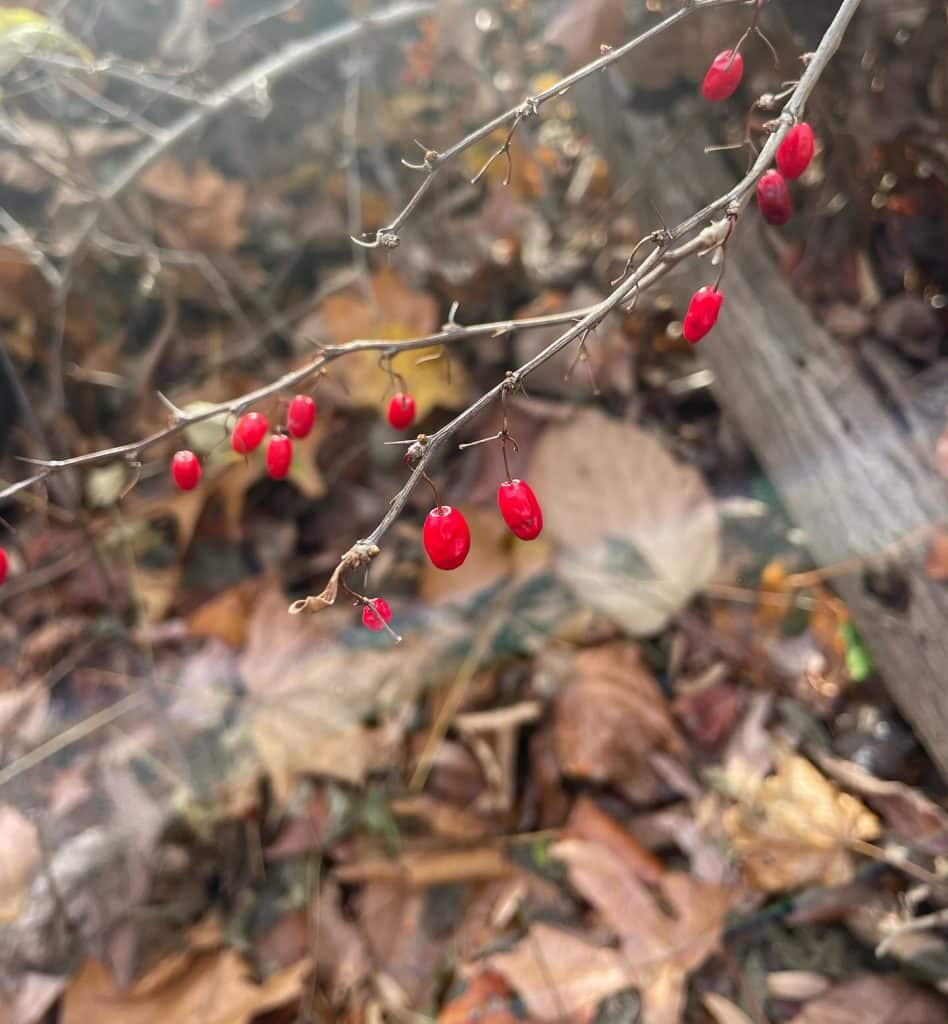
Japanese Barberry (Berberis thunbergii) is an invasive plant with edible and medicinal berries that persist through the winter. Japanese barberries can be found in forest clearings and overgrown fields. In the spring, the plant produces edible small leaves that are accompanied by a single spine. The plant has yellow flowers in the spring which become […]
Albizia julibrissin – Mimosa Tree
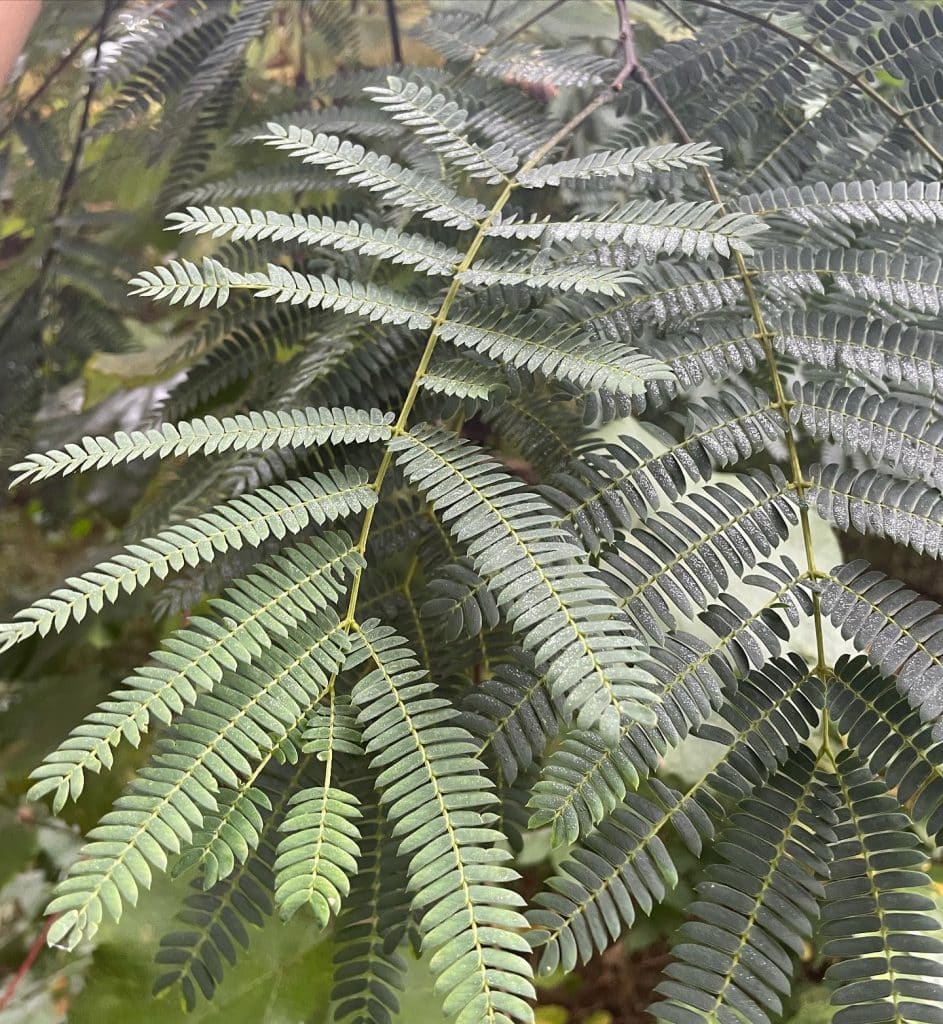
The Mimosa tree (Albizia julibrissin) is an invasive tree from Asia and the Middle East. The mimosa tree has fern-like leaves and silky pompom flowers in the summer. The flowers become flat paper brown seed pods in late summer. Young mimosa leaves can be eaten cooked or dried and used for tea. Blossoms can be […]
